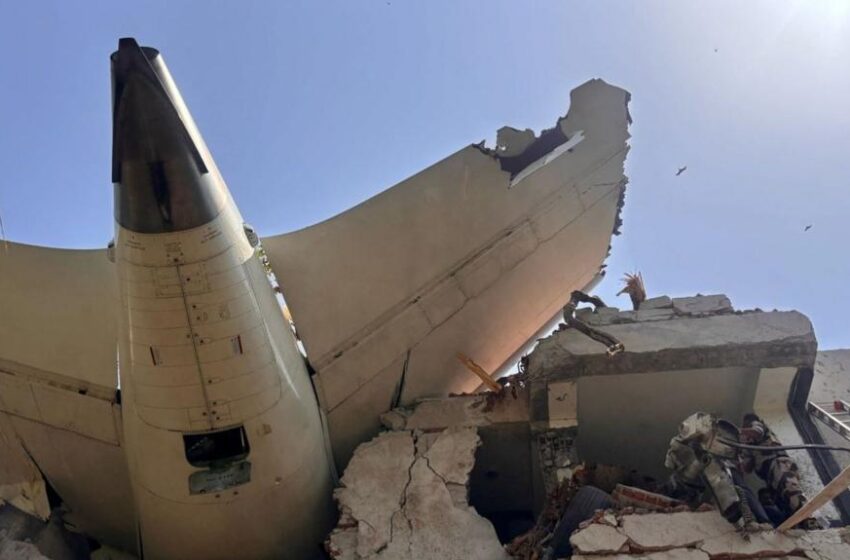Air India crash caused by faulty pilot seat, report reveals

Air India crash and other top plane accidents in 2025 raise concerns over aviation safety in the world.
A devastating report has revealed that a malfunctioning pilot seat was the key factor behind the fatal crash of Air India Flight AI171, which went down shortly after takeoff from Ahmedabad on June 12, 2025. The tragic incident, which claimed 270 lives, occurred when the captain’s seat unexpectedly slid backward, causing the thrust levers to be unintentionally pulled to idle.
This led to a sudden power loss and a fatal stall just 26 seconds into the flight. The shocking details, released in a preliminary report by India’s aviation authority, have triggered global concern over the safety of Boeing 787 Dreamliners and prompted urgent calls for design changes and immediate aircraft inspections worldwide.
Air India Flight AI171 Crashes After Takeoff from Ahmedabad
A tragic aviation disaster occurred on June 12, 2025, when Air India Flight AI171, a Boeing 787 Dreamliner, crashed shortly after takeoff from Sardar Vallabhbhai Patel International Airport in Ahmedabad, India. The aircraft was headed to Newark, New Jersey, but failed to gain altitude, crashing just 26 seconds after liftoff into a hostel building near the airport. The accident claimed the lives of all 270 people on board, including 255 passengers and 15 crew members. Several individuals on the ground were also injured or killed, making it one of the deadliest air crashes in India’s recent aviation history.
Faulty Captain’s Seat Blamed for Air India Boeing 787 Crash
According to the preliminary crash investigation report released by India’s Directorate General of Civil Aviation (DGCA), the disaster was caused by a faulty pilot seat mechanism. The report reveals that during takeoff, the captain’s seat unexpectedly slid backward, a result of a malfunction in the seat’s locking system. As the seat shifted, the pilot’s hand unintentionally pulled back the thrust levers, reducing engine power at a critical moment. This action caused the aircraft to lose lift and stall immediately after takeoff.
Boeing 787 Throttle Pulled to Idle Due to Seat Malfunction
The thrust levers of the Boeing 787 Dreamliner were reportedly pulled to idle position as the captain’s seat moved suddenly during takeoff. This unintended action disrupted the engine thrust needed to maintain climb, leading to a rapid drop in airspeed. Despite the co-pilot’s attempt to recover the situation, the aircraft had already stalled and there was not enough altitude or time for recovery. The plane crashed into a hostel building, resulting in massive casualties and widespread devastation in the nearby area.
DGCA Preliminary Report Confirms Seat Mechanism Failure
The DGCA’s preliminary report highlights that the captain’s seat had a history of mechanical issues and was not properly maintained. The investigation confirmed that the seat’s locking system was defective and allowed uncommanded movement during critical flight phases. Additionally, the aircraft’s auto-throttle system failed to re-engage in time, further compounding the power loss. Investigators noted that similar complaints about pilot seats had been reported in the past, but had not resulted in corrective actions significant enough to prevent this disaster.
READ ALSO
Air India crash, Toronto tragedy… top plane accidents in 2025
Another Air India plane suffers technical issue midair, nearly crashed
India Air Crash: Pilot’s last words, sole survivor, other heartbreaking tales
Ahmedabad: Moment London-bound plane with 242 passengers crashed in India
Boeing 787 Safety Under Scrutiny After Air India Crash
Following the crash and the release of the initial findings, Boeing has come under renewed scrutiny for safety oversight in its Dreamliner series. In response, the aerospace company has pledged to redesign the pilot seat locking mechanisms in all Boeing 787 aircraft. Boeing also announced that it would issue a mandatory service bulletin requiring airlines to inspect and replace faulty seat systems immediately. The U.S. Federal Aviation Administration (FAA) and the European Union Aviation Safety Agency (EASA) have also instructed global operators of the 787 to conduct urgent inspections of captain and co-pilot seats.
Crash of Air India Flight AI171 Sparks Global Aviation Concerns
Aviation analysts and safety experts have described the crash as a preventable tragedy. According to Capt. Rohit Saluja, an independent aviation consultant, the mechanical failure was predictable and could have been avoided through regular maintenance and better seat design standards. He stressed that the aviation industry must now prioritize cockpit ergonomics and redundancy systems to prevent such malfunctions from leading to catastrophe.
Victims of the Air India Crash Remembered Across India
The crash has left families across India and beyond devastated. Among the victims were families traveling to the U.S. for holidays, students pursuing academic programs abroad, and experienced crew members. Candlelight vigils and memorial services have been held in Ahmedabad and other cities, with condolences pouring in from global aviation stakeholders and foreign governments. Air India has pledged full support to the families of the deceased and set up emergency contact centers to provide updates and compensation details.
Air India Grounds Boeing 787s as Investigation Continues
In the aftermath of the crash, Air India temporarily grounded several Boeing 787 Dreamliners in its fleet pending seat system inspections. The airline has assured the public that it is working closely with Boeing and aviation regulators to ensure the safety of its operations. Meanwhile, a final DGCA report is expected by early 2026, which will include black box data, cockpit voice recordings, and a comprehensive analysis of maintenance records.

